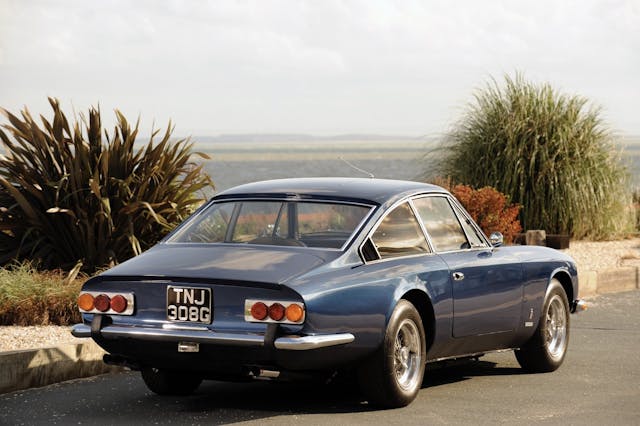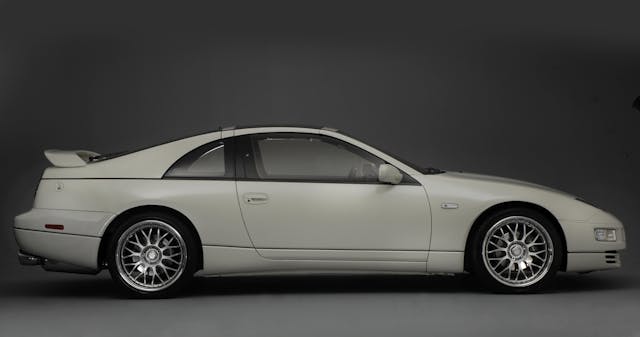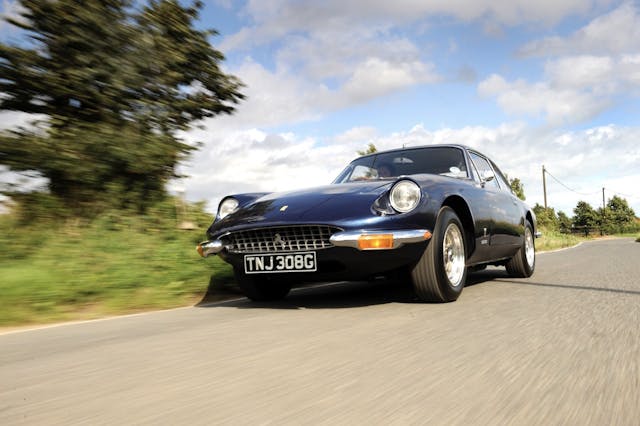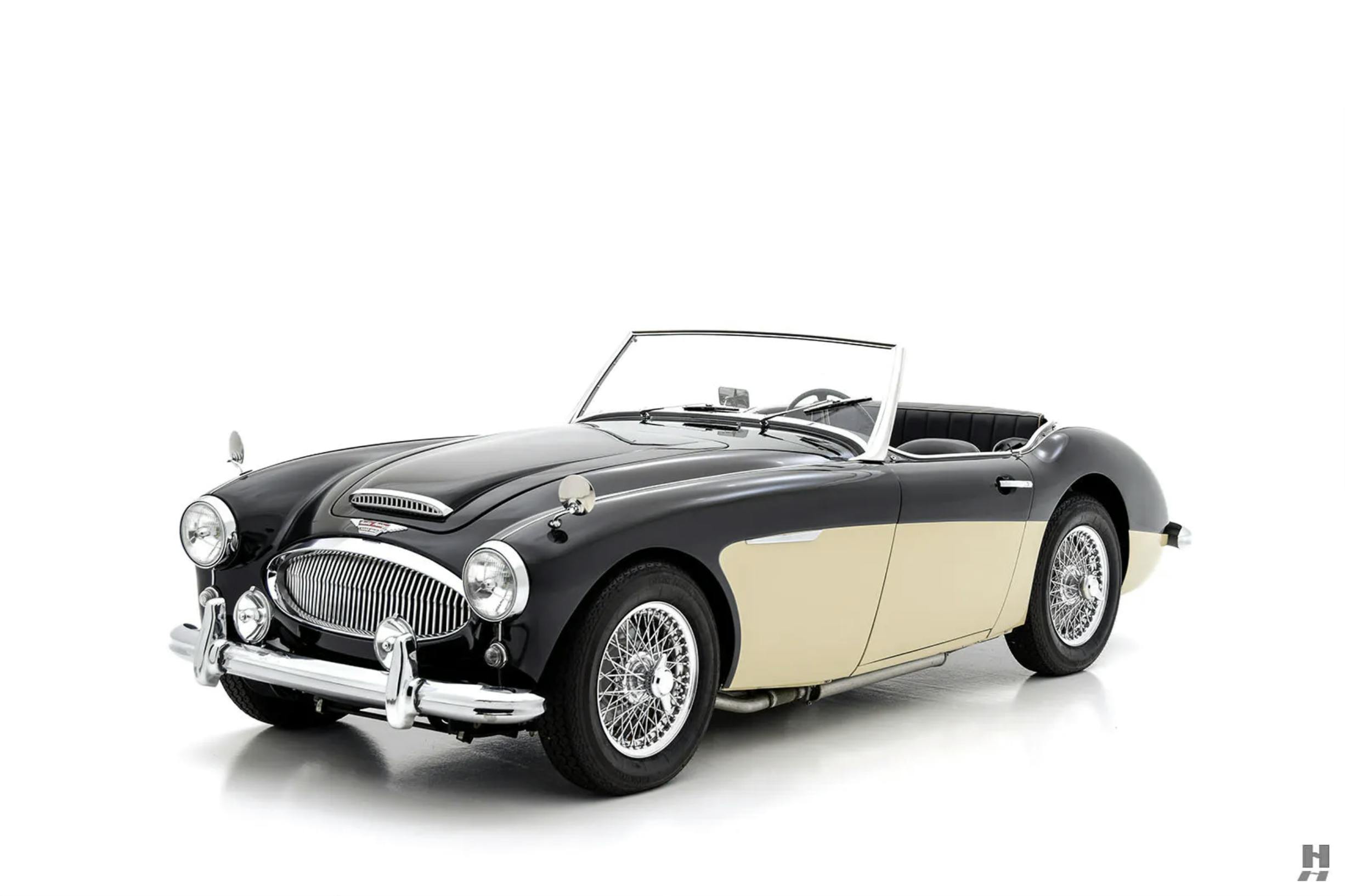If a two-seat classic is too expensive, try the 2+2
In the not-too-distant past, when a convertible would roll onto the block at one of his collector car sales, former auctioneer Dean Kruse would declare: “When the top goes down, the price goes up!” For the most part, he wasn’t wrong.
At a recent meeting of the minds here at Hagerty, we got to noodling on that theme, until we’d mangled it enough to arrive at our own declaration: “When the wheelbase goes up, the price goes down!” Specifically, we were talking about four-seat versions of two-seat cars. But were we right?
When British Motor Corporation introduced the Austin-Healey 100-6 for 1957, in addition to shoehorning two more cylinders into the popular 100-4, the company cleverly wedged in two extra seats. Just like that, the jaunty little roadster gained extra oomph and extra utility. In a remarkable feat of vehicular packaging, the car’s wheelbase only grew from 90 to 92 inches, and neither the car’s elegant profile nor its essential nature were sacrificed. Though the change was minute, it should tell you something about just how useful those rear seats were.
Nonetheless, Austin-Healey had broadened the appeal of a great sports car by making it available to a wider segment of buyers: people with friends. More importantly, the 100-6 (which would become the 3000 after 1959 and feature the same 92-inch wheelbase no matter the seating configuration) lost nothing in translation. It still looked fantastic.
In the decades since, a handful of manufacturers have attempted to capture a bit of that magic by turning their own popular two-seaters into 2+2s, with varying degrees of visual success. It’s a fine line, after all, to mess with something so delicately balanced as the aesthetics of a universally lauded sports car.
Jaguar knows a thing or two about that. In 1966, Jag put its sexy Series I E-Type in traction, taking the wheelbase from 96 to 105 inches, until it emerged as the far less sexy but ever more practical E-Type 2+2. A year later, Lotus pulled the wheelbase of its lithe Elan S3 like so much taffy, from 84 to 96 inches, to create the Elan +2 (or Plus Two, or Plus 2). Ferrari followed suit by injecting 9.7 inches into the wheelbase of its handsome 1968 365 GTC, taking it from 94.5 to 104.2 inches to make the 365 GT 2+2, a car soon nicknamed The Queen Mary, for obvious reasons.
Not to be outdone, in 1974, Datsun messed with a good thing by upping the wheelbase of its perfectly lovely 260Z from 90.7 to 102.6 inches. Sixteen years later, as Nissan, the company did it again when it put back seats in the stunning 300ZX, extending the car’s wheelbase from 96.5 to 101.2 inches.





I’m not here to call anyone’s baby ugly, or even mildly unattractive, but it’s hard to argue that any of the above turned out as visually successful as their two-seat counterparts. The four-seat variants were all, however, successful in their own right. Jaguar, for instance, sold 5600 Series I E-Type 2+2s from 1966 to ’68, compared with roughly 7800 coupes. The later Series II 2+2 outsold its two-seat sibling 5330 to 4860, though in both series, roadsters trumped all. Datsun buyers clearly preferred the purer lines of the two-seater, snapping up more than 40,000 of them in the one year they were offered, but 9500 people opted for the 260Z 2+2. And between 1968 and 1971 Ferrari sold 800 365 GT 2+2s, compared to fewer than 200 two-seat GTCs.
In other words, in period the longer cars did not lack for buyers. But how does today’s collector-car market view them?
Well, a two-seat 1960 Austin-Healey 3000 BN7 in #1 (Concours) condition carries a Hagerty Price Guide value of $98,900, while its 2+2 counterpart, the BT7, is valued at $95,200, just a 3.7 percent discount. Potato-potahto, right? But keep in mind those two cars share the same wheelbase. Remaining in #1 territory, the fall-off is far more striking when comparing an E-Type with its lanky, more voluminous brother—$288,000 vs. $147,000—a 49 percent discount.
For the Elans, the two-seater is valued at $62,300 and the Plus 2 at $43,600, a 30 percent discount. Perhaps unsurprisingly, the most eye-popping result lies with the pair of Ferraris: We have the 365 GTC priced at $845,000, while the GT 2+2 clocks in at $290,000—a 66 percent difference. Talk about a child tax credit!

The percentages change slightly as we move down the condition ratings, but the theory holds: When the wheelbase goes up, the price really does go down.
That’s great news for buyers unable to, uh, stretch the budget for their first choice. Or for buyers in search of interesting sedan alternatives. If you’re willing to overlook the extra proportions these 2+2s carry, if you’re happy to embrace the added utility even tiny back seats can offer—if you’re a person with friends—then these 2+2s built from their two-seater siblings are absolutely worth considering.
***
Check out the Hagerty Media homepage so you don’t miss a single story, or better yet, bookmark it. To get our best stories delivered right to your inbox, subscribe to our newsletters.





One must use care when dabbling in the 2+2 market.
Some models are ok as they are reasonable to restore and maintain. But others can be just as expensive to take care of and maintain but be worth only a fraction of the 2 seat version.
This is why some Ferraris 2 seat cars are restored from only a few parts yet some 2+2 cars are parted out in better condition.
The parts from the 2+2 often can be sold for more than the cars together value as some things like engines and suspensions go to the 2 seat cars that are off the chart value wise.
Before getting into some of these cars you really need to investigate the cost of work vs value as a good deal can really go sour if you find the repairs may challenge the value of the car.
Good point, and the 2 + 2’s often have unique parts as well.
2+2 article x 2 I prefer in most cases the non +’d version. The lines tend to look wrong on the extended version.
My guess is that the slight value difference in 2 vs 4 seat Austin-Healeys may be due to lower production numbers. As far as rear seats affecting eye appeal, I think the MGB-GT did the best job of avoiding that.
I agree. The BGT was a great look unto it’s self. I’d add the Triumph GT6 to the list also, add a straight 6 and a hatch to a Spitfire and it worked.
I have a pricelist for 1972 Maseratis ( not with me, on vacation) : 2 seat Ghibli $ 18,000, 2 plus 2 (really 4 seat) Indy same price, convertible Ghibli 19k. Now: 180k, 80k and 800k…..
How does the Mazda RX8 2+2 FIT INTO THIS CONVERSATION?
Ooh, that’s a good question, Bill. That cars idiosyncrasies might just plop it into a category of one.
Yes some 2+2 are designed better than others.
A 911 looks great but the two jump seats are really worthless. Often the seats work styling pays the price and if the styling works the seats pay the price. it is rare both work.
I for one prefer the extended Jag 2+2
The 1982-85 Supra was a 2+2 seater.